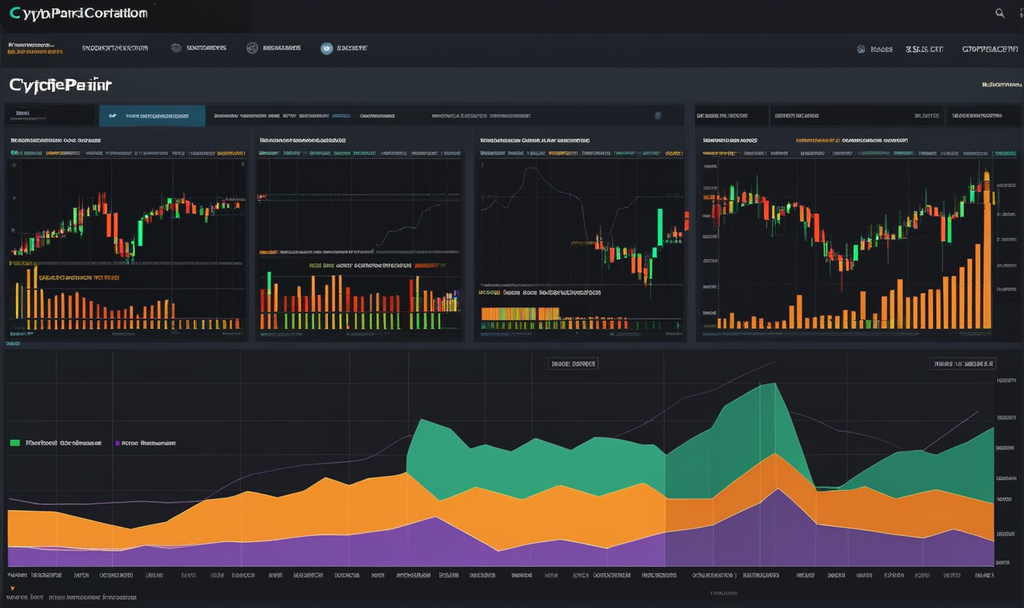Introduction:
In the dynamic realm of cryptocurrency trading, where volatility is the norm, investors seek every possible tool to gain an edge. One such potent tool that often goes overlooked is correlation analysis. In this blog post, we’ll delve into the significance of correlation analysis and explore how it can be effectively utilized in navigating the complex world of cryptocurrency pairs.
Understanding Correlation Analysis:
Correlation analysis involves examining the statistical relationship between two variables. In the context of cryptocurrency pairs, it helps traders identify how closely the price movements of two assets are linked. The correlation coefficient, ranging from -1 to 1, quantifies this relationship. A positive correlation indicates a synchronized price movement, while a negative correlation suggests an inverse relationship.
Identifying Correlation in Cryptocurrency Pairs:
To leverage correlation analysis effectively, traders must first identify correlated pairs. This can be achieved through historical price data and advanced charting tools. For instance, if two cryptocurrencies consistently move in the same direction, they exhibit a positive correlation. Conversely, if their price movements diverge consistently, a negative correlation is at play.
Diversification and Risk Management:
Correlation analysis is a cornerstone in constructing a diversified cryptocurrency portfolio. A well-diversified portfolio includes assets with varying degrees of correlation to mitigate risk. When one asset experiences a downturn, assets with lower or negative correlations may offset losses, enhancing overall portfolio stability.
Correlation and Market Sentiment:
Correlation analysis extends beyond mere price movements; it can also provide insights into market sentiment. For instance, a positive correlation between two cryptocurrencies may indicate a broader bullish market sentiment. Conversely, a negative correlation might suggest a more risk-averse market.
Risk Factors and Caution:
While correlation_analysis is a valuable tool, it is essential to approach it with caution. Correlations can change over time, influenced by various factors such as market trends, regulatory developments, or macroeconomic shifts. Relying solely on historical correlations without considering the broader market context can lead to suboptimal decisions.
Case Studies: Real-world Applications
To illustrate the practical applications of correlation analysis, let’s explore a few case studies:
- Bitcoin and Ethereum:
Bitcoin and Ethereum, the two leading cryptocurrencies, have historically exhibited a positive correlation. However, during periods of market uncertainty or specific events impacting one blockchain more than the other, their correlation may decrease. Traders can use this information to adjust their risk exposure accordingly.
- Stablecoins and High-Volatility Altcoins:
Stablecoins like USDC or USDT often show a negative correlation with high-volatility altcoins. When the market is in turmoil, investors tend to flock to stablecoins, creating a negative correlation between stable assets and more volatile alternatives.
If you have any question about this article, please contact us …
You can easily create a free cryptocurrency wallet with binance …
Conclusion:
In conclusion, correlation analysis is a powerful tool for cryptocurrency traders seeking a strategic edge in the market. By understanding the relationships between different assets, traders can make informed decisions, manage risk, and optimize their portfolios. However, it is crucial to approach correlation analysis with a nuanced perspective, recognizing its limitations and staying attuned to evolving market dynamics. Embracing correlation analysis as part of a comprehensive trading strategy can elevate one’s ability to navigate the intricate landscape of cryptocurrency pairs.

